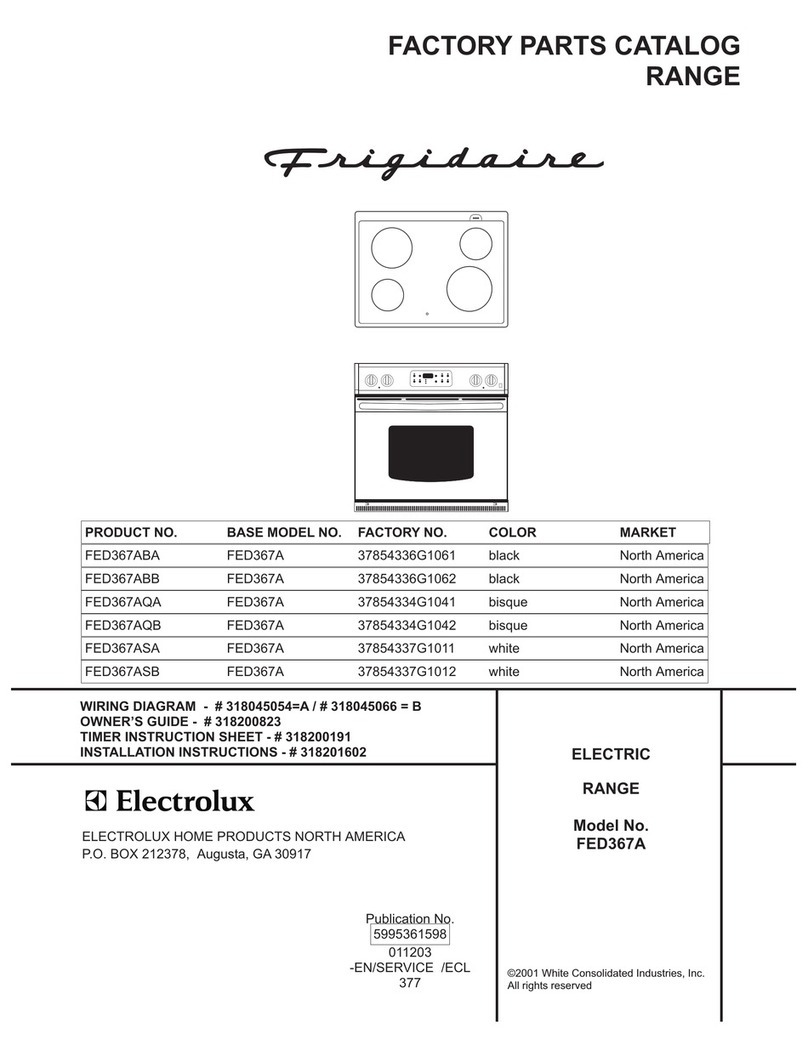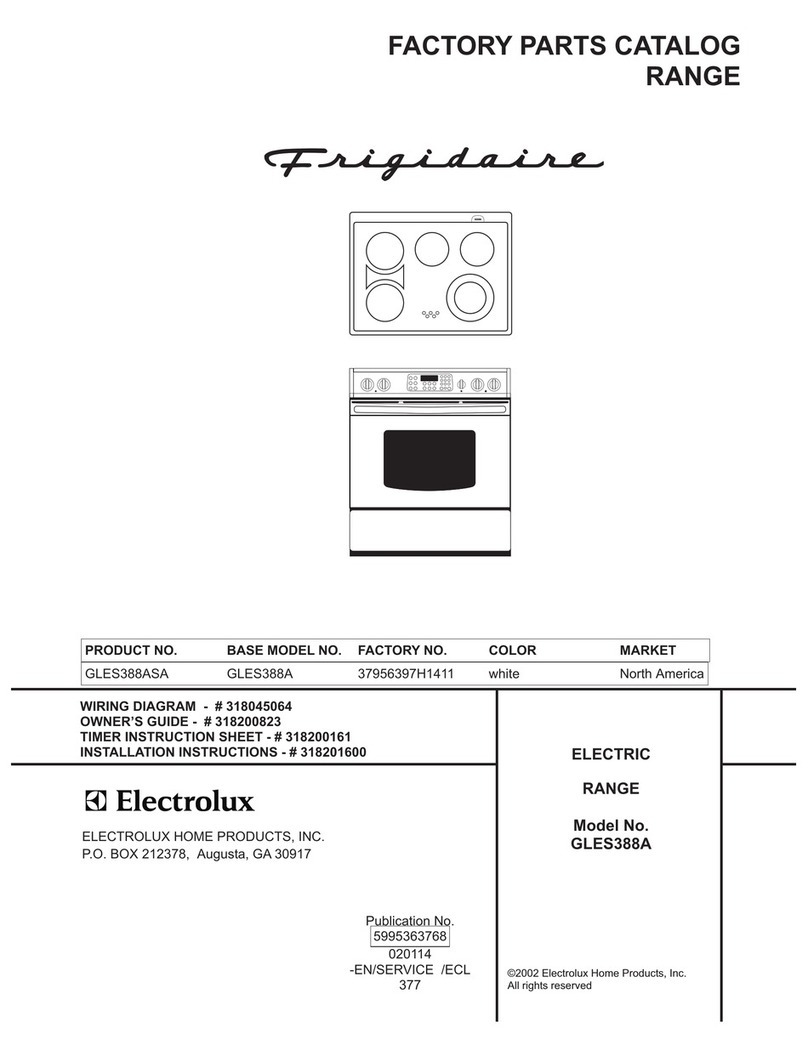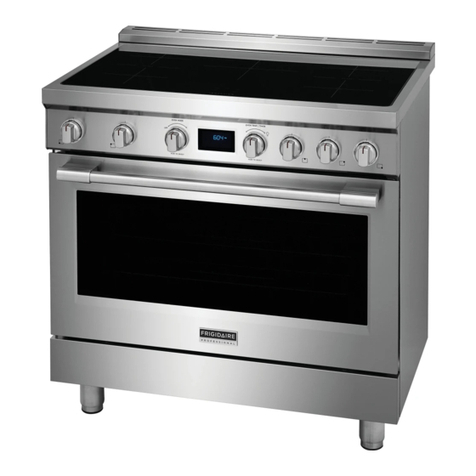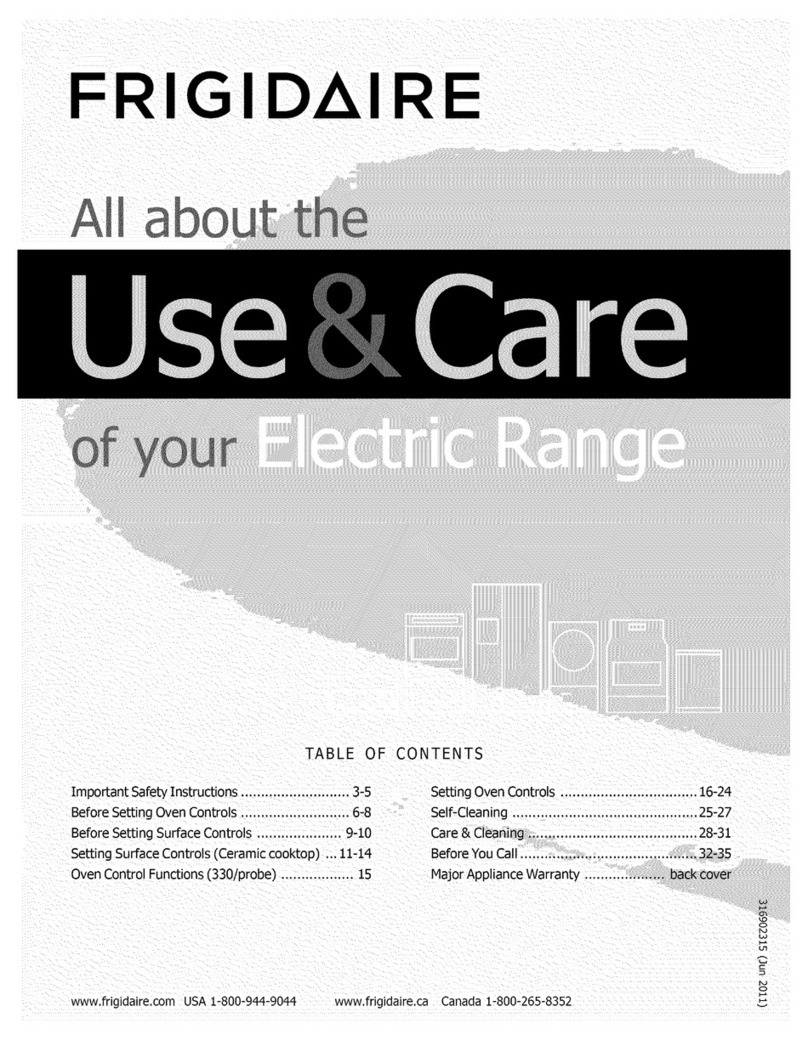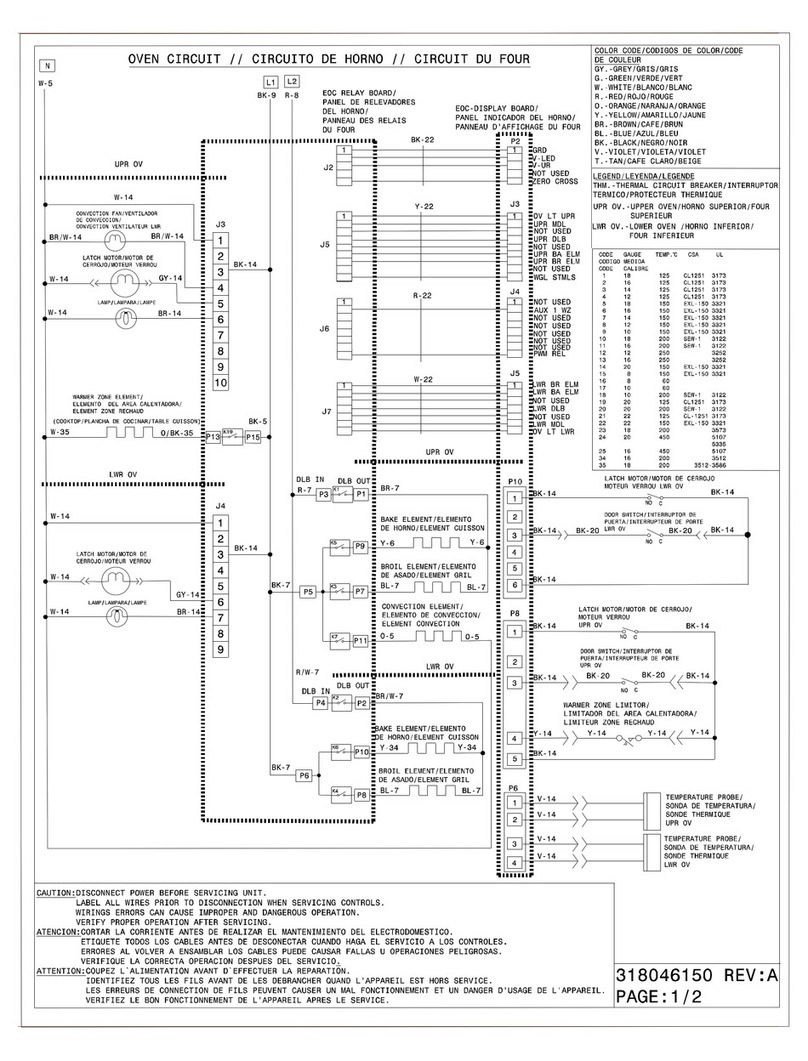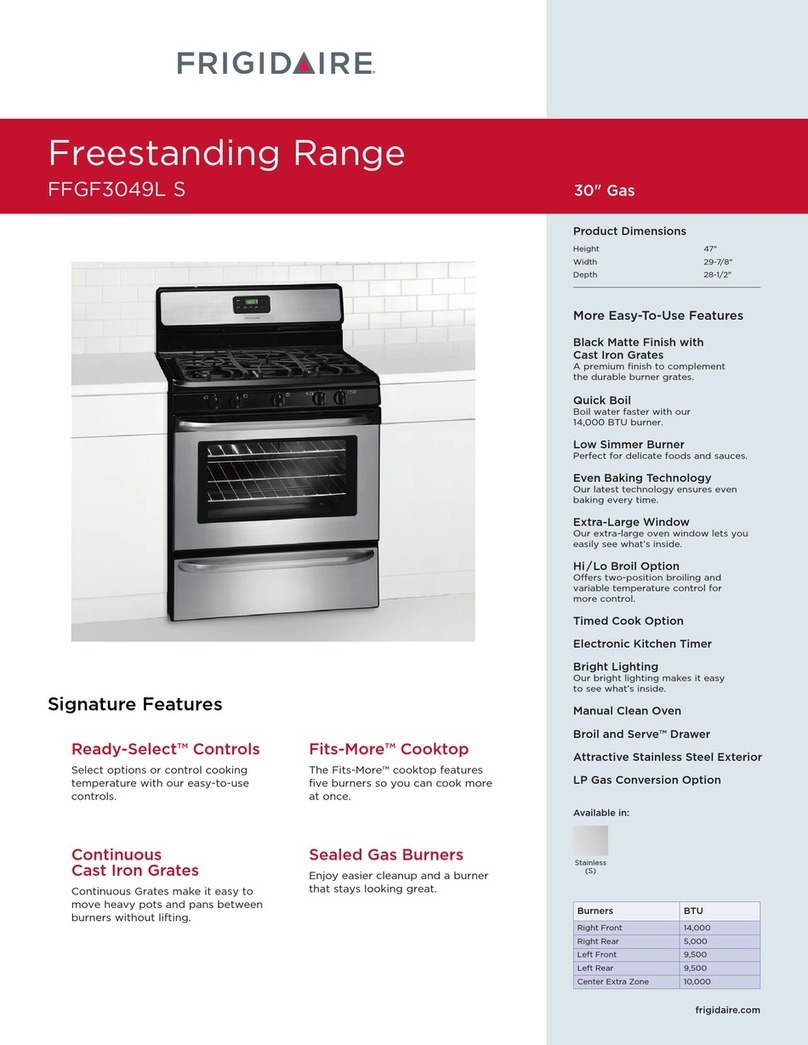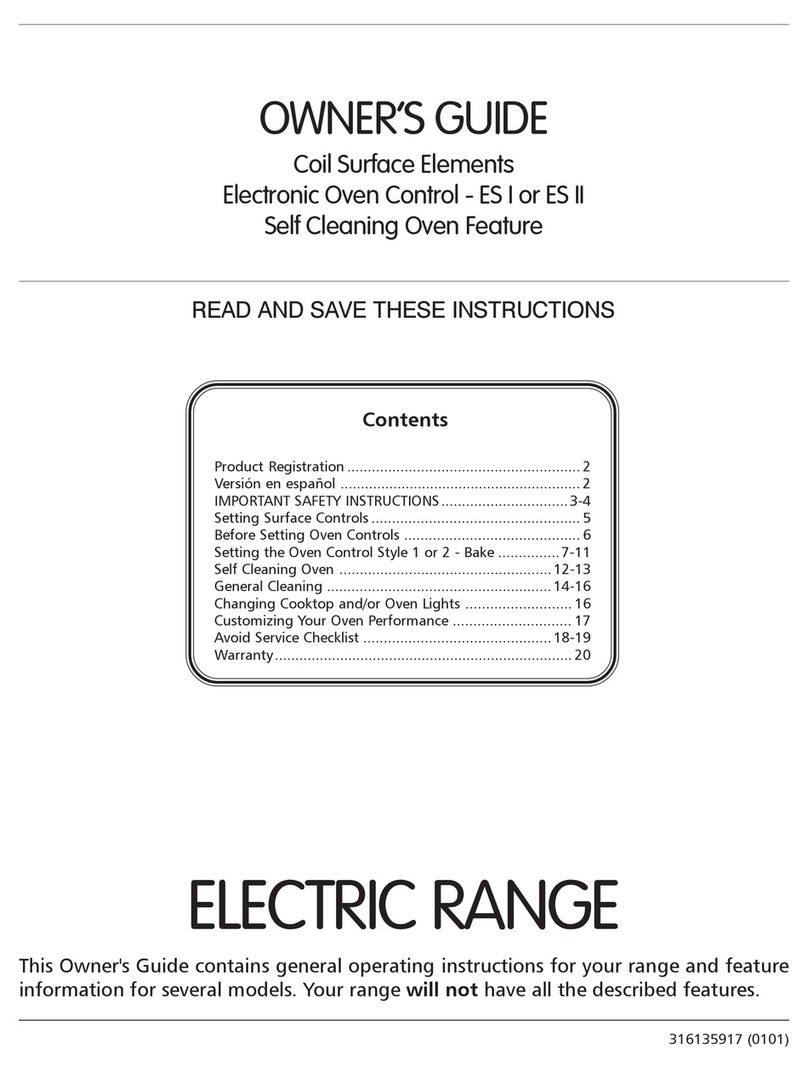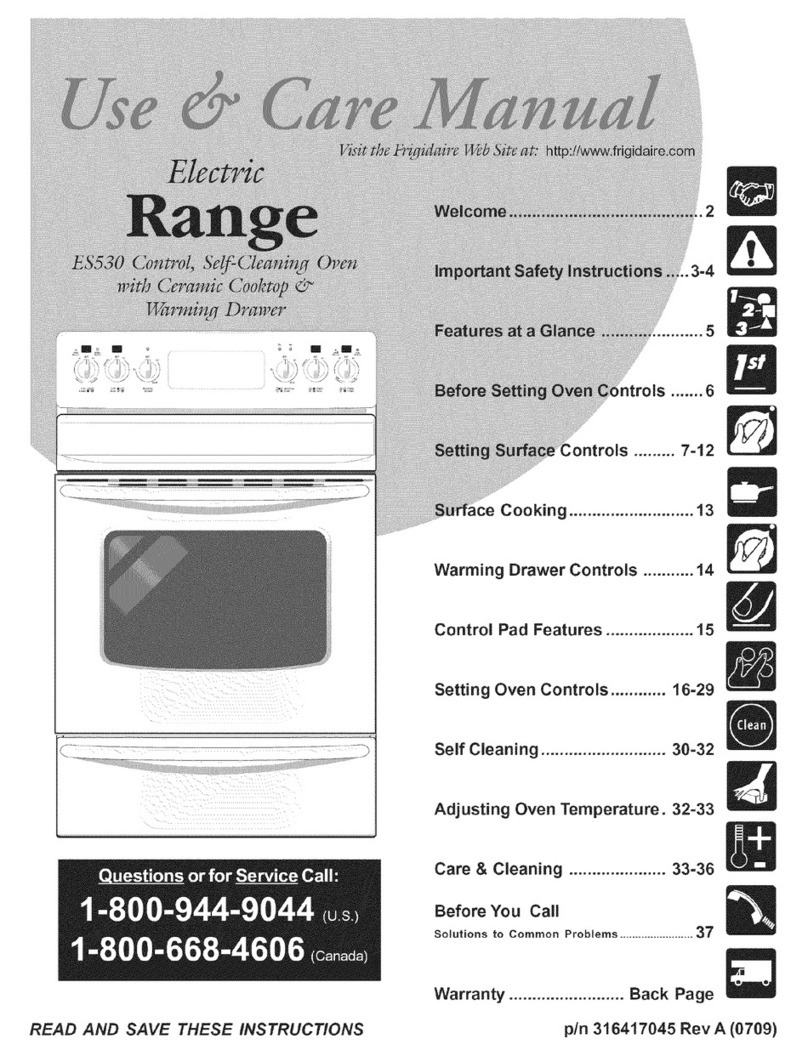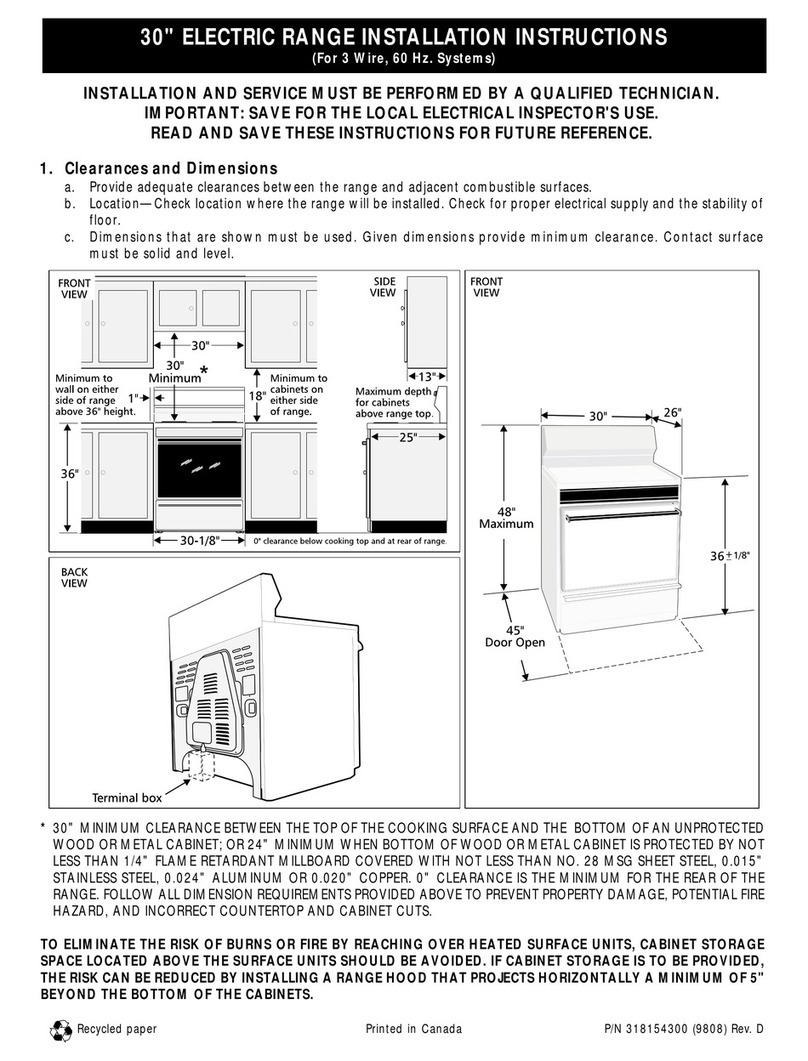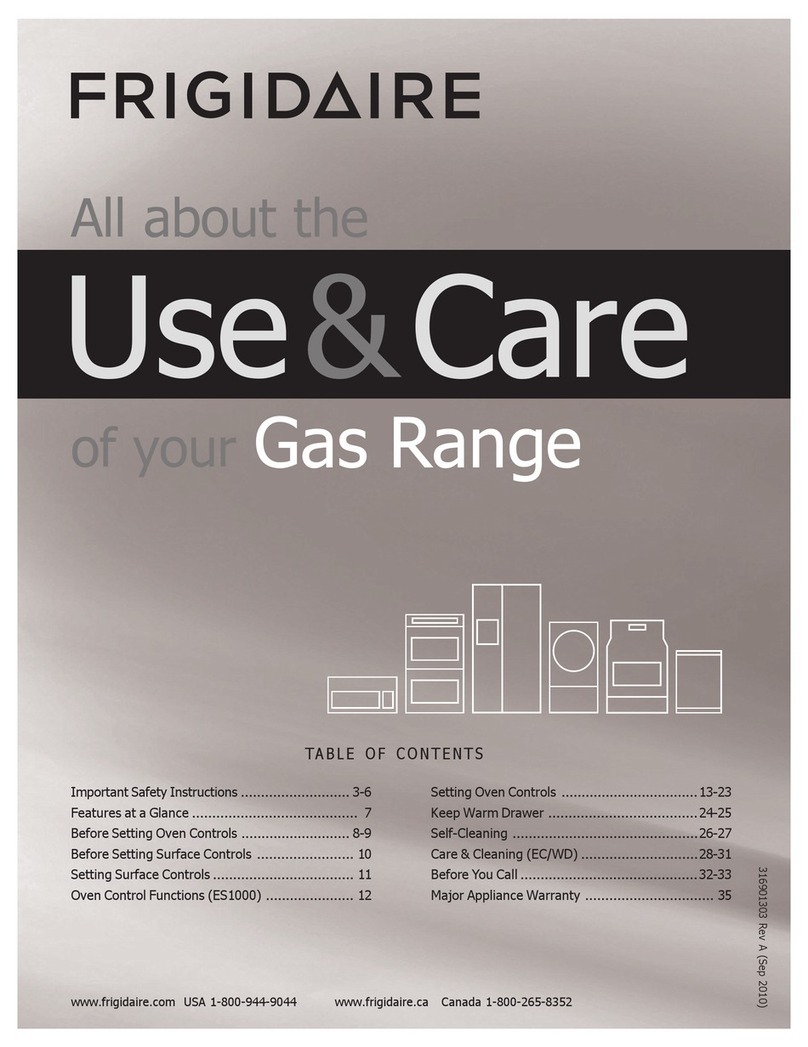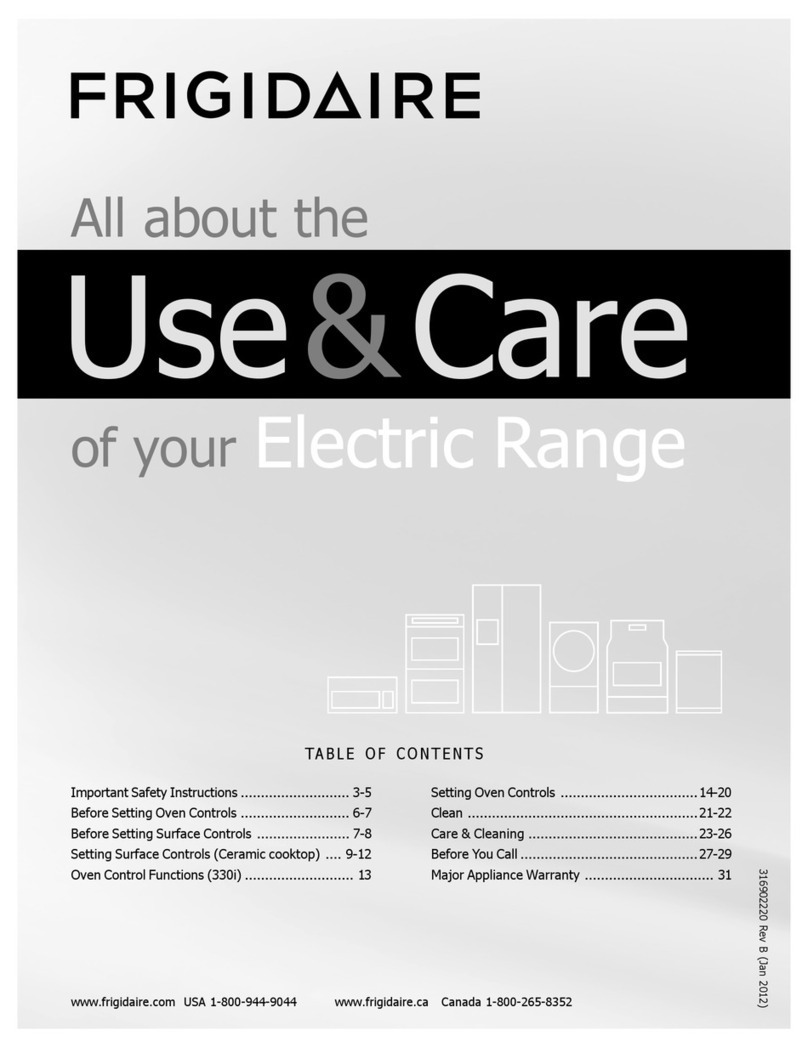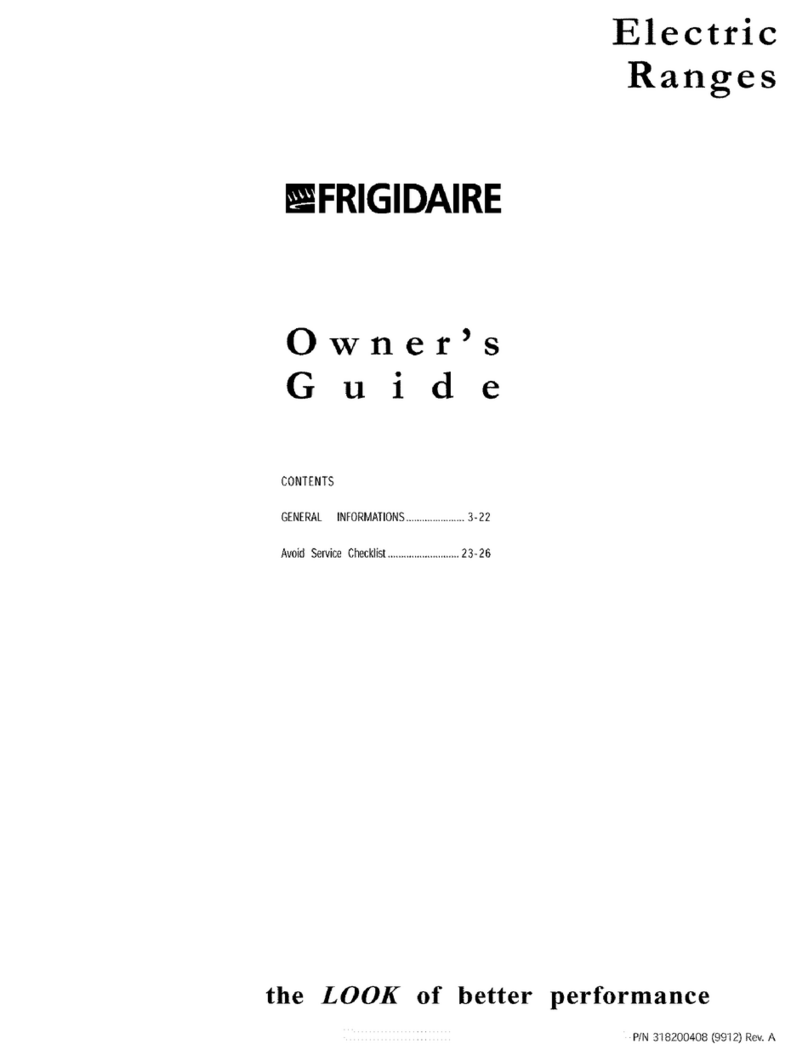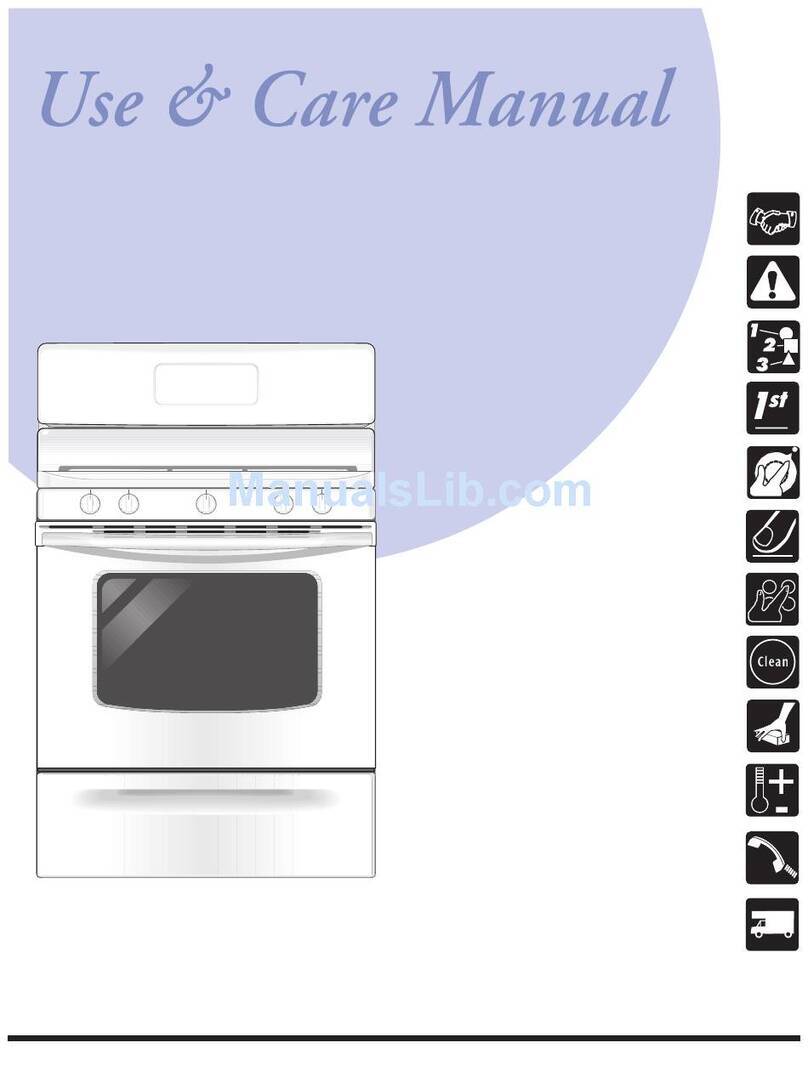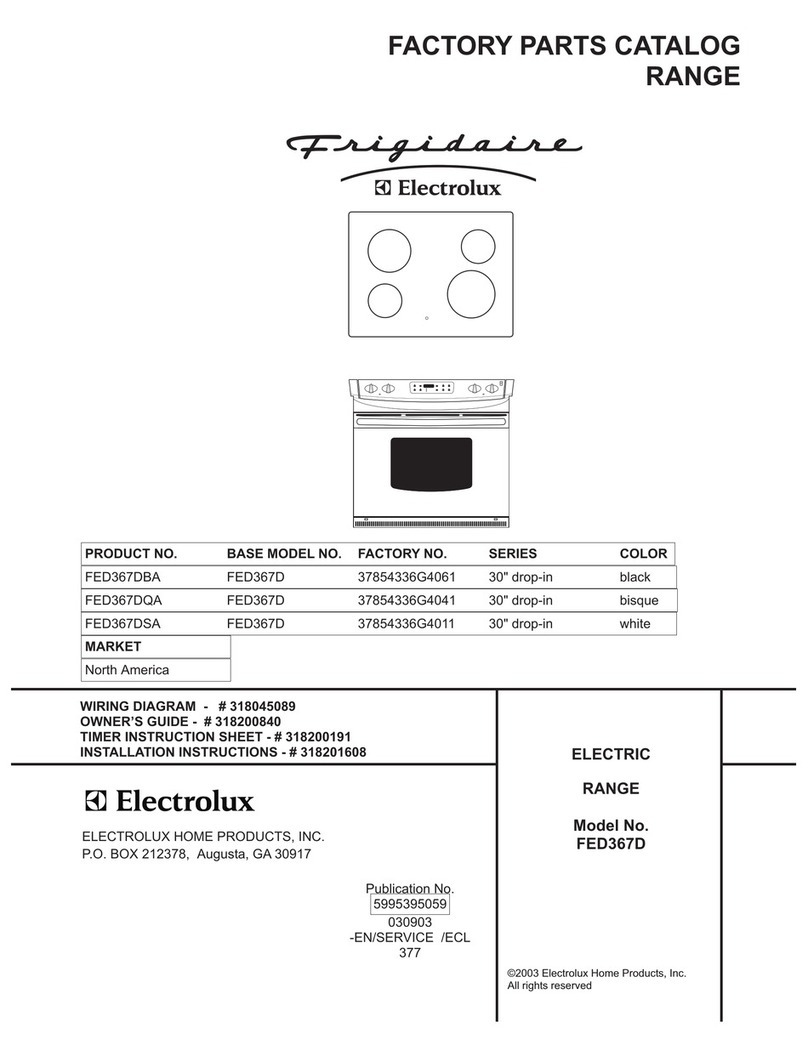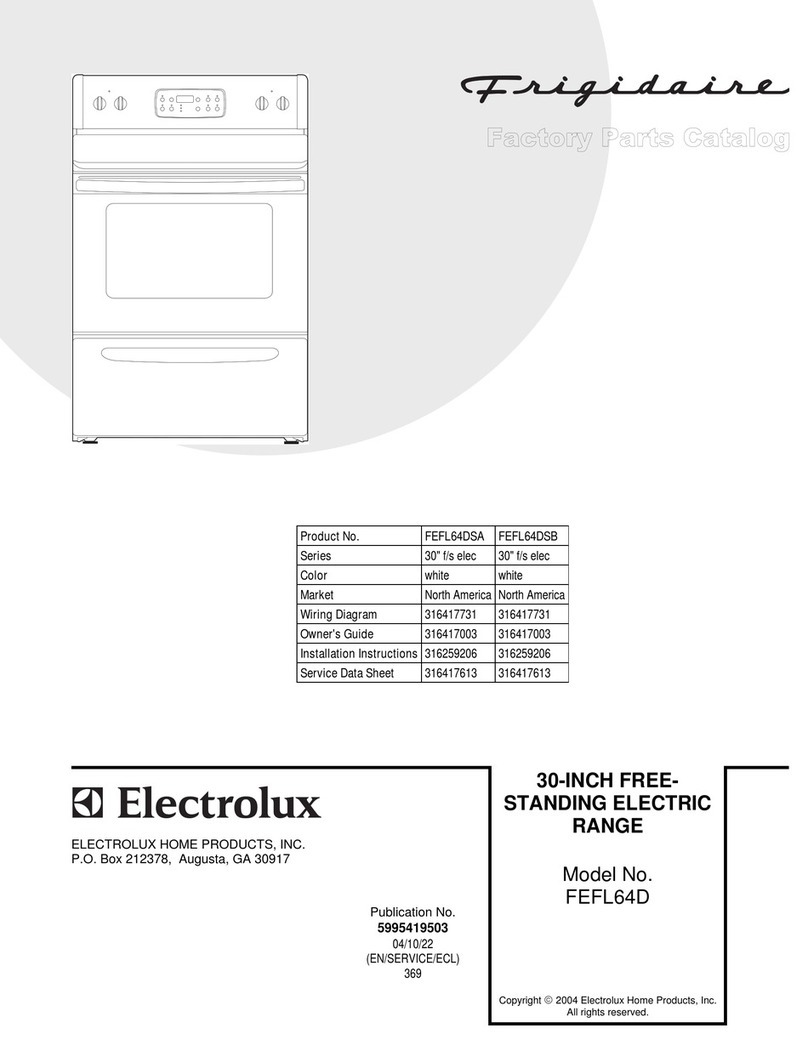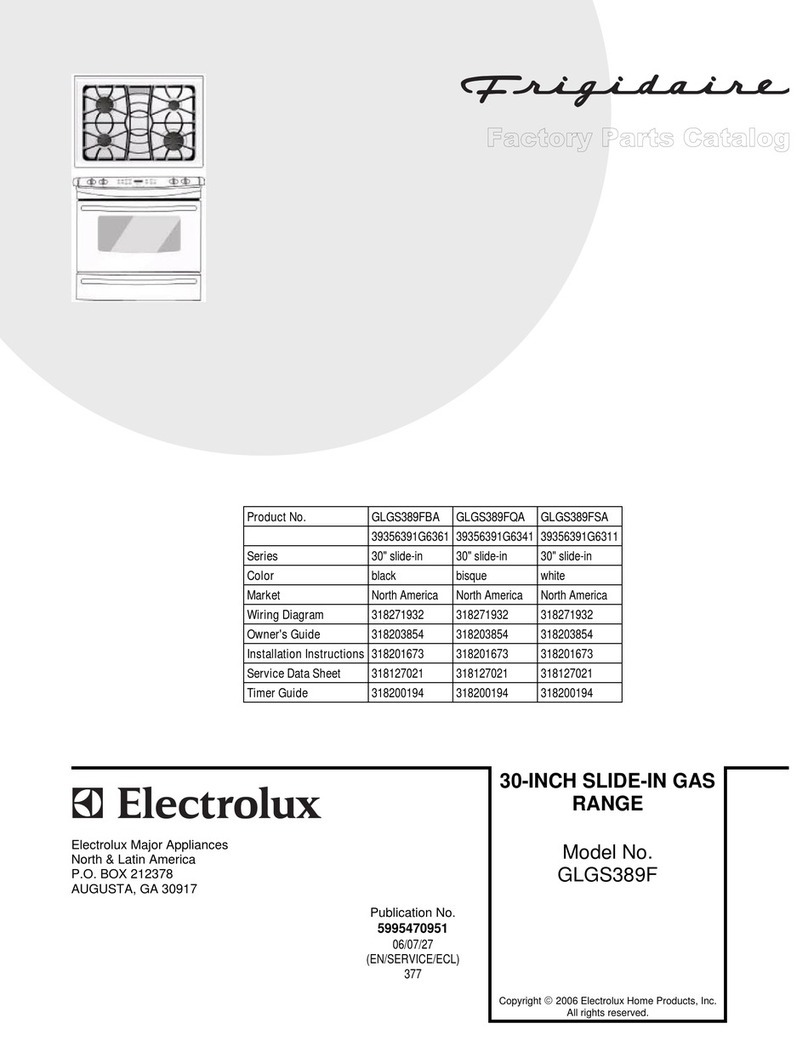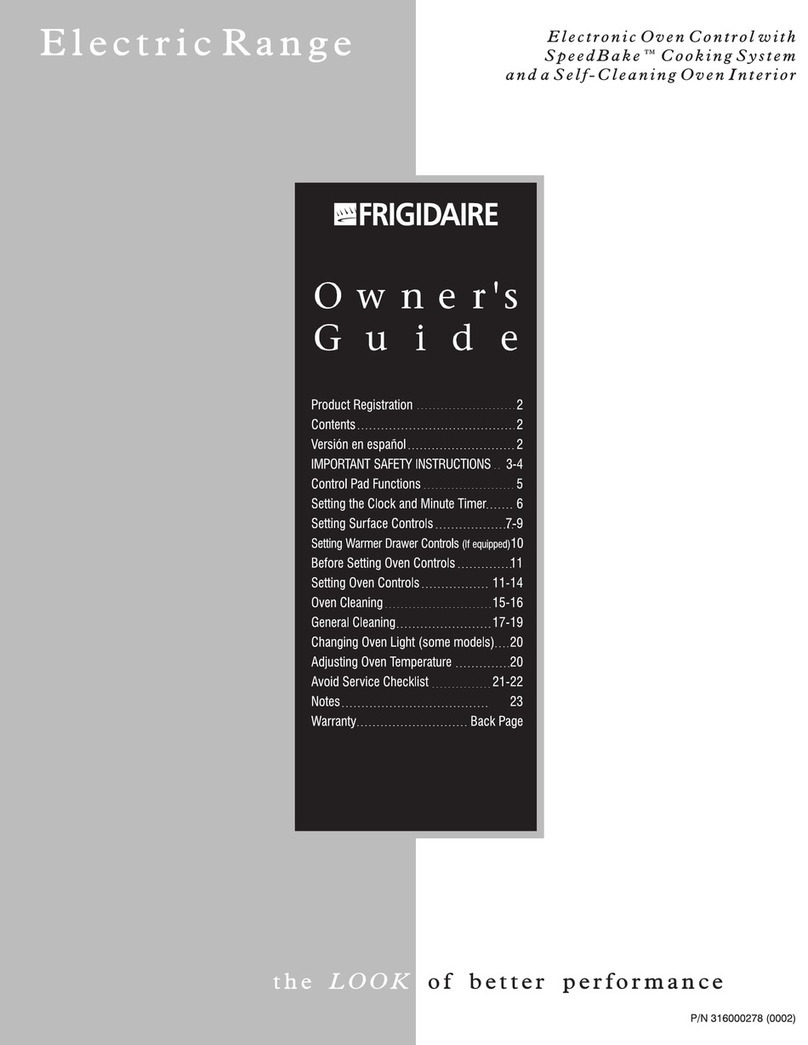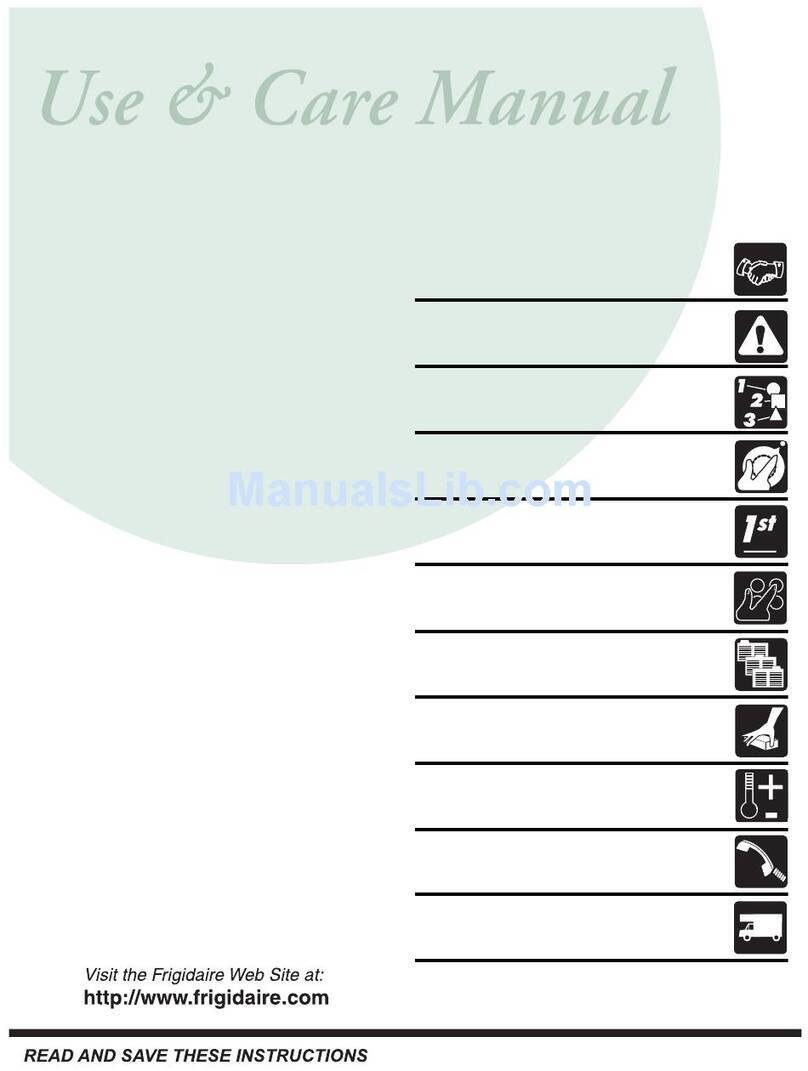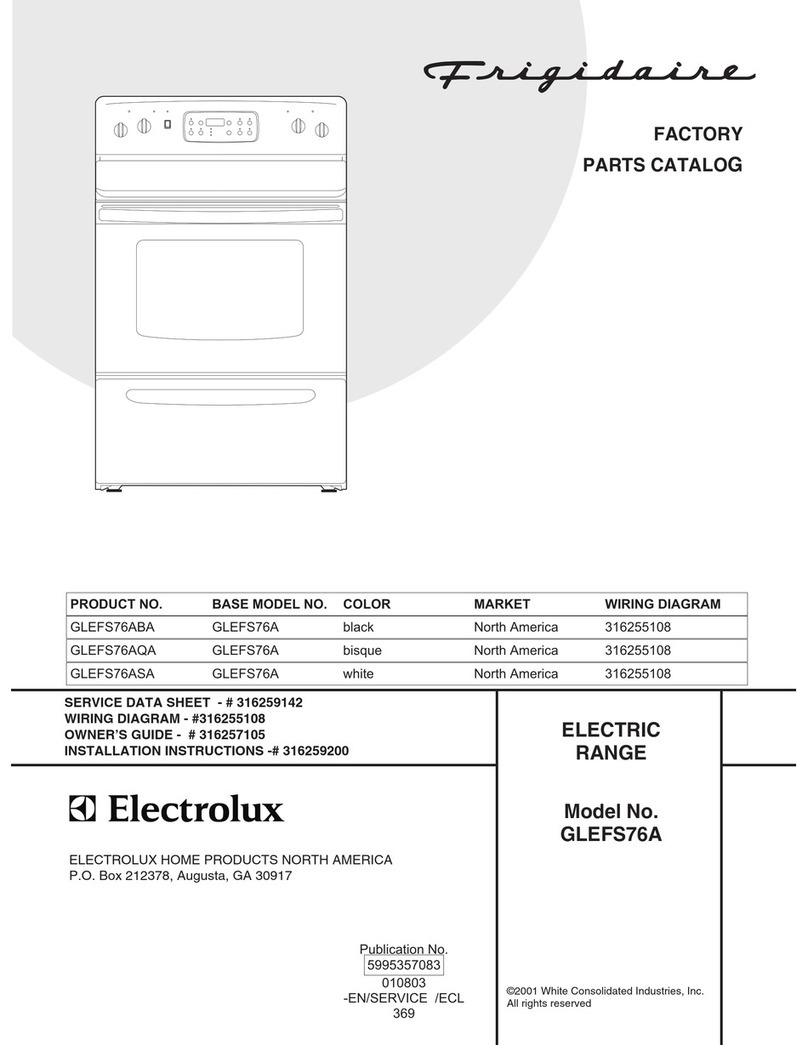IMPORTANT SAFETY INSTRUCTIONS
• Do not leave children aloneiChildren should not be
left alone or unattended in the area where appliance
is in use. Theyshould neverbe allowed to sitor stand on any
part of the appliance
•DO NOT TOUCH SURFACE UNITS, AREAS NEARTHESE
UNITS, OVEN HEATING ELEMENTS OR INTERIOR
SURFACESOFTHE OVEN. Both surface and oven heating
elements may be hot even though they are dark in color.
Areas near surface units may become hot enough to cause
burns. During and after use, do not touch, or let clothing or
otherflammable materials touch these areasuntil they have
had sufficient time to cool. Among these areas are the
cooktop, surfacesfacing the cooktop, the ovenvent openings
and surfaces near these openings, oven door and window.
•Wear proper apparel--Loose-fitting or hanging
garments should never be worn while using the
appliance. Do not let clothing or other flammable materials
contact hot surfaces
•Do not usewater or flour on grease firesiSmother the
fire with a pan lid, or use baking soda, a dry chemical
or foam-type extinguisher.
•When heating fat or grease, watch it closely. Fat or
grease may catch fire if allowed to become too hot
•Use only dry potholders--Moist or damp potholders
on hotsurfaces may result in burns from steam. Do not
let potholders touch hot heating elements. Do not use a
towel or other bulky cloth instead of a potholder.
•Do not heat unopened food containers--Build-up of
pressure may cause container to burst and result in
injury.
•Remove the oven doors from any unused range if it is
to be stored or discarded.
IMPORTANT--Do not attemptto operatethe oven during
a power failure. If the power fails, always turn the ovens
off. If the ovens are not turns off and the power resumes, the
oven may begin to operate again. Food left unattended could
catch fire or spoil.
Electronic controllers can be damaged by
cold temperatures. When you use you rappliance for the
first time, or if it has not been used for a long period of
time, make surethat it hasbeen exposed to a temperature
above 0°C/32°F for at least 3 hours before connecting it
to the power supply.
IMPORTANT INSTRUCTIONS FOR USING YOUR
COOKTOP
• Know which knob controls each surface heating unit.
Use proper pan size. This appliance isequipped with one
or more surface units of different sizes.Select utensilshaving
flat bottoms large enough to cover the surface unit. The use
of undersized utensils will expose a portion of the surface
heating to direct contact and may result in ignition of
clothing. Proper relationship of utensilto the surface unit will
also improve efficiency.
Utensil handles should be turned inward and not
extend over adjacent surface units--To reduce the risk
of burns, ignition of flammable materials, and spillage due
to unintentional contact with the utensil. The handle of the
utensil should be positioned sothat it isturned inward, and
does not extend over adjacent surface units.
• Never leave surface units unattended at high heat
settings--Boilovers cause smoking and greasy spillovers
that may ignite, or a pan that has boiled dry may melt.
Protective liners--Do not usealuminum foil to line oven
bottom or any other part of the appliance. Only use
aluminum foil asrecom mended for baking if usedasacover
placed on the food Any other use of protective liners or
aluminum foil may result in a risk of electric shock or fire or
short circuit
Glazed cooking utensils--Only certain types of glass,
glass/ceramic, ceramic, earthenware, or other glazedutensils
are suitable for rangetop servicewithout breaking due to the
sudden change in temperature. Check the manufacturer's
recommendations for rangetop use
Do not use decorative surface element covers. If an
element isaccidentally turned on, the decorative cover will
become hot and possibly melt. Burns will occur if the hot
covers are touched. Damage may also be done to the
cooktop.
FOR GLASS COOKTOPS ONLY
• Do not clean or operate a broken cooktop--lf cooktop
should break, cleaning solutions and spillovers may penetrate
the broken cooktop and create a risk of electric shock
Contact a qualified technician immediately
• Clean cooktop glass with caution--If a wet sponge or
cloth isused to wipe spills on a hot cooking area, be careful
to avoid a steam burn. Some cleaners can produce harmful
fumes if applied to a hot surface.
